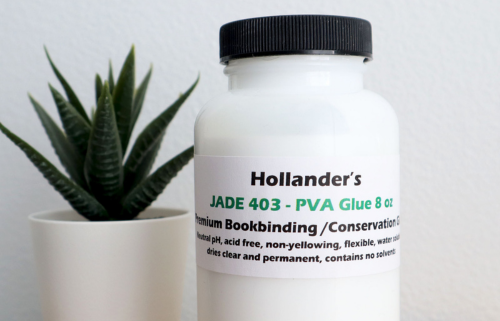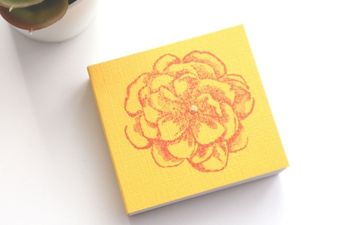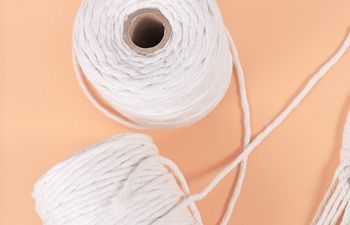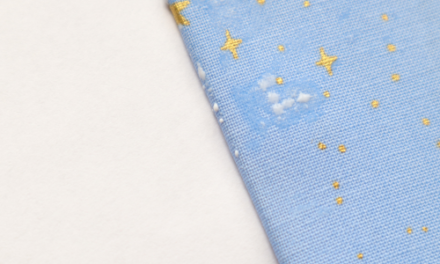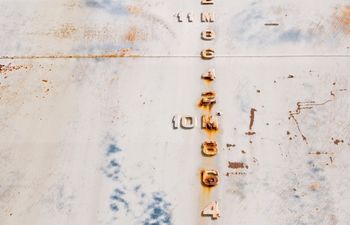PVA adhesive is sold in lots of different quantities, from one cup (1/2 pint or 8oz) all the way up to 5 gallons. At first, you’ll probably decide to buy in small quantities. Or, like most beginner bookbinders, you may even use Elmer’s glue (a form of PVA) before jumping into the “real stuff.” As your hobby grows, however, buying bigger quantities of bookbinding glue will make more sense. This is especially true if you’re selling your works or creating multiple copies for an edition.
When buying a half or full gallon of PVA bookbinding glue, the question of shelf life is very real. Given that a gallon of PVA will run upwards of $60+ (before shipping), you might want to know how long it will last. In this post, I’ll talk about the average shelf life of PVA and share some tips to keep your PVA in the best condition possible.
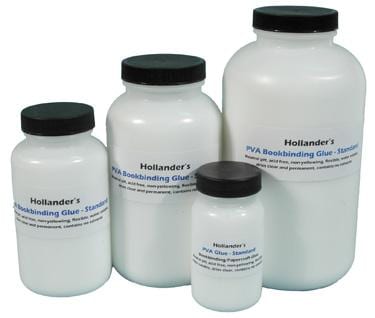
Shelf life of PVA bookbinding glue
Under ideal conditions, PVA bookbinding glue can last (on average) up to 2 years. This is true for all types of PVA glue, even Elmer’s. So if you’ve got a bottle of Elmer’s glue from 2007, now is a great time to throw it out 😄
This might make you wonder, “What are considered “ideal conditions”? Let’s discuss those next.
Ideal conditions for PVA storage
PVA is acid-free, so it cannot fend off bacterial invasions like other preserved products. Each time the lid is removed, you run the risk of exposing the PVA to new bacteria. The development of bacteria will reduce its efficacy over time and turn the normally white adhesive into a yellow-ish color. To avoid this, follow these rules for safe storage of your PVA:
- store PVA in its pure state (unmixed with any other substances)
- choose a shady, cool, dry location
- keep PVA out of direct sunlight
- do not allow PVA to freeze
- make sure the container lid is sealed when not in use
Tips for keeping PVA fresh as long as possible
To keep PVA fresh, it’s important to limit exposure to bacteria and the conditions that drive bacterial growth. Here are a few tips to help you keep your new adhesive in top quality form as long as possible:
- if you mix PVA with another adhesive, such as Methyl Cellulose, be sure to use a separate container and only mix what you need. Add-ins generally reduce the shelf life of PVA to around 3-6 months
- order PVA in the warm months and avoid ordering in the winter (depending on how cold it gets where you are). Frozen PVA is essentially rendered useless
- pour only what you need from the larger container and re-seal the lid tightly
- store in a cool, dry place like the basement or closet
- never store PVA in direct sunlight, even if the container is “light blocking.”
How do I know if my PVA bookbinding glue is still good?
Eventually, bacteria will build up in your PVA. Over time, the accumulated bacteria will lead to a few noticeable signs that it might be time to order some new PVA. Here are the most common:
- the PVA is a yellow-ish color (or any color other than white)
- foul odor (it will smell liked spoiled milk)
- takes much longer to dry, or resists adhesion
- PVA remans clumped or separated even after thorough mixing
When in doubt, toss it out!
I studied at the American Academy of Bookbinding in 2022 (and I will study there again in 2023). While there, my professor shared his philosophy on the shelf life of any adhesive used in the bookbinding world: “When in doubt, toss it out.”
This may seem overly simple, but he’s right. Using a quality adhesive is paramount when making a book intended to last for many years. If your PVA glue starts to smell odd or doesn’t seem to be sticking properly, it’s best to toss it out and order in a new batch!
Where to Buy Bookbinding Glue
I’ve personally purchased from these retailers, but it is possible to buy from other places on the Internet. I also include a jar of PVA (I may even send Jade 403 to surprise you!) in my bookbinding kits.
- PVA (synthetic) – Standard: Hollander’s or LineCo
- PVA (synthetic) – Jade 403: Hollander’s or Colophon
Other adhesives you might be interested in:
- Methyl Cellulose (plant-based) – Talas Online or Hollander’s
- Wheat Paste (plant-based) – Colophon or Hollander’s
More bookbinding goodness
✨ What tools do I need to get started bookbinding?
- Bookbinding Tools & Supplies Quick Start Guide – learn all about book making tools, which to buy first & where to go online
- Pick up my popular Complete Starter Bookbinding Tools Kit – all the bookbinding essentials in one spot
🌟 Looking for a simple way to start making books?
Try a Complete Book Materials Kit. Each one has everything you need (+ tutorials & videos) to make a beautiful book without all the fuss.
Thank you for taking me along on your book making journey!
Misty
